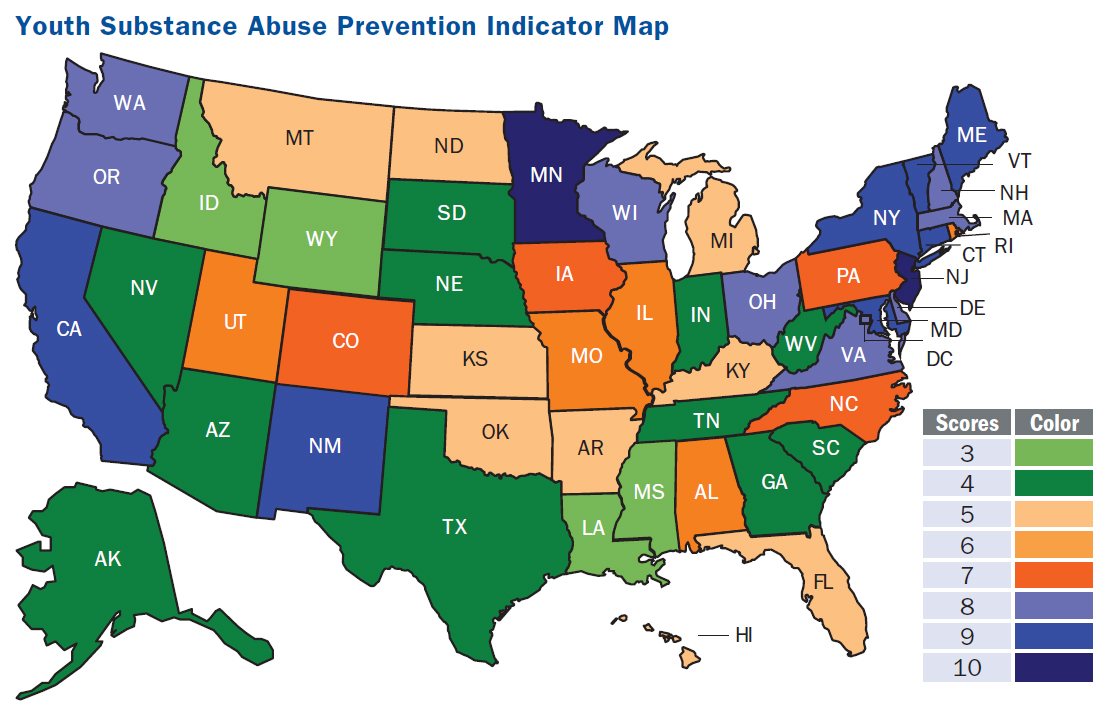
WASHINGTON — Though the most effective policies have been identified to fight substance abuse in teens, states don’t use them widely enough, public health researchers say in a new report.
The Trust for America’s Health, a public health nonprofit based in Washington, says in its report that dealing with substance use is more than teaching kids to “just say no.” Instead, a prevention-oriented approach is needed to build protective factors and reduce risk factors among children and teenagers.
While teen substance use has decreased over time, the rates still are too high, said the researchers. The rise of the prescription drug and heroin epidemics adds to the urgency to implement new strategies, they said.
[Related: Engaging Kids Fights Substance Abuse, Organizations Say]
“Achieving any major reduction in substance misuse will require a reboot in our approach — starting with a greater emphasis on preventing use before it starts, intervening and providing support earlier and viewing treatment and recovery as a long-term commitment,” said Jeffrey Levi, executive director of the trust.
The report, funded by a grant from the Conrad N. Hilton Foundation, identifies 10 key indicators that can improve the wellbeing of children and youth and are connected to preventing substance misuse.
Two states — Minnesota and New Jersey — meet all 10 indicators, such as graduation rate thresholds, mental health funding levels and bullying prevention laws. Twenty-four states meet five or fewer indicators, and of those, four tie for the lowest score of three: Idaho, Louisiana, Mississippi and Wyoming.
The researchers called for starting prevention efforts at younger ages, integrating school and community efforts, prioritizing data collection, making screening and referrals to treatment routine and increasing funding for treatment.
“It’s time to bring innovations to scale and invest in more proactive and sustained approaches that promote positive protective factors, like safe, stable families, homes, schools and communities and intervene early to address youth substance use before addiction develops,” said Alexa Eggleston, senior program officer, domestic programs, for the Conrad N. Hilton Foundation.
The report highlighted data that shows more than 65 percent of students have used alcohol, more than 40 percent used illegal drugs and about 25 percent smoked cigarettes at some point before or during high school. More than 90 percent of adults who have a substance use disorder began their use before age 18, according to the report.
The report also looked at the latest data on teenage overdose deaths among 12- to 25-year-olds. According to an analysis by the trust, no state had a drug overdose rate of more than 6.1 per 100,000 for that age group in 1999-2001. By 2011-13, 33 states had surpassed the rate of 6.1 per 100,000.
The researchers attributed the rise in overdose deaths to increases in prescription drug use and the increase in heroin use by young adults age 18 to 25.
More related articles:
Foster Care System Feels Shock Waves from Heroin Addiction
Talking Intervention and Youth
Youth Impact: High School Students Lead Substance Abuse Prevention Efforts
































